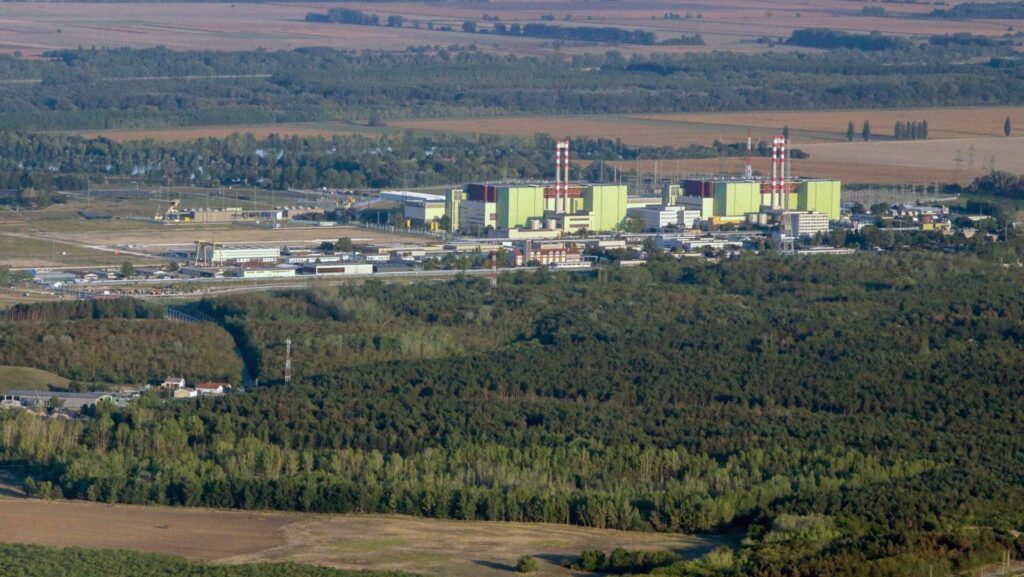4 November is an official day of mourning in Hungary, marking the start of the Soviet invasion of the country in 1956, which crushed the anti-communist revolution. Tens of thousands of Soviet soldiers poured into the country, and they installed the puppet government of János Kádár with a reformed pro-Soviet ‘Hungarian Socialist Workers Party’ to power. The Soviet victory was followed by mass repression committed by the internal security forces of the Soviet puppets. Many fled the country, hundreds were executed, and thousands were imprisoned up to the 1963 amnesty under US pressure.
Ferenc Pálházy is a historian working at the Committee of National Memory and an expert on the post-revolution period. His research interests are the political trials after the fall of the 1956 revolution and the history of the internal security forces under communism. On the occasion of 4 November, he spoke to Dániel Farkas from the Danube Institute about how the Soviets and their Hungarian clients repressed the Hungarian population after the defeat of the 1956 revolution.
***
How did the Soviets manage to defeat the revolution after their invasion on 4 November, and when did the retaliation campaigns start?
First, it is important to emphasize that the Soviets invaded without really leaving the country. A lot of soldiers deployed were fanning out just from bases already in Hungary.
It is hard to distinguish between the phases of the Soviet takeover and the start of the Communist vengeance. Attila Szakolczai argues that there is a clear date for this, 12 December 1956. He says that by this date, all active opponent groups of the Communist state were defeated.
They then focused not on getting back to power, but on finding, punishing, and physically destroying real or perceived enemies of the state. An especially important element of this was the Communist militiamen using their firearms freely in the streets, firing into protesting groups, etc.
Obviously, before 1989, it was a holiday with positive connotations for the state. Was it commemorated officially as well then? Were they commemorating heroes like we do now with the revolutionaries?
Yes, it was actually revered as the ‘second liberation’ of Hungary by the Soviets, the first being the 1945 takeover of Hungary at the end of the Second World War.
A lot of people who fought against revolutionaries were officially commemorated by propaganda, especially those who were ‘martyrs’ of Communism. No less than 224 Hungarians were commemorated as heroes who were killed defending the ‘state of workers and peasants’.
Curiously, it is quite similar to the number of people executed for their ‘counterrevolutionary activities’, that is, participating in the revolution against communism.
Is there a deliberate element to this near-parity of victims? How many people were executed among the revolutionaries?
Yes, several authorities in the field have already pointed out that the similarity of these numbers is not by chance.
233 revolutionaries were executed by the state without any real chance of a fair trial. Sometimes, on appeal, their punishments were made even more severe because there was no restriction on aggravating sentences, which is legal nonsense. Some people were condemned to prison terms in the first instance and then received capital punishment on the second, and were executed, consequently.
How ‘successful’ were the communists in catching revolutionaries? Did they condemn people for actual deeds that they committed during the revolution, or did they make up the cases themselves?
One of the most important elements to this was that the state could prove to society that these people were actually dangerous.
‘233 revolutionaries were executed by the state without any real chance of a fair trial’
Seeing the original archival documentation, it is clear that they were full of claims that did not correspond to reality at all, and not just in the sense that they are simply untrue. One of the cases, for example, that I research now asserts that there were one and a half active and armed ‘counterrevolutionaries’ operating in the Mecsek mountains in the southwestern part of Hungary, still in January 1957.
They tried to catch anybody who was connected somehow to the revolution, even persecuting some individuals based on dubious evidence, such as a photograph.
After the defeat of the revolution, who executed the retaliation campaigns against the population? Was it the Soviet Army or the Hungarian government?
It is important to see how essential the cooperation between the Hungarian communists and the Soviets was during the course of the repression campaign. János Kádár was personally instructed to ‘bring back order to Budapest’ by Ivan Serov, leader of the KGB, on 5 November. The Soviet ‘advisors’ played a key role in Hungarian politics; the country was really under remote control.
A primary element of the retaliation was the political trials that we discussed earlier. They institutionalized it and deployed huge resources to execute it. They organized an array of new internal security groups. Loyal officers were banded into security details from early on.
Other details were made up of reservists and volunteers. They could have been party members from before the revolution, oftentimes people from the edge of society who were disadvantaged before communism. From another angle, idealistic young communists appeared—sometimes families, father and son.
Some security details were entirely made up of these ‘external’ manpower—that is, outside of the Army. From 15 December, the Ministry of Interior organized security details as well. Then, from January 1957, the ‘Workers Guard’ was created, which was disbanded only at the end of 1989. A lot of different security details operated at the same time.
It is well known that in Hungarian slang, the internal security troops who carried out the retaliation were called pufajkás, literally vatnik, after their typical Soviet-style quilted winter jackets. How did this name originate?
The security units received their clothing from the Soviet Army directly, which resulted in them getting these typical thick coats from the winter outfit of the Soviets. Their armament, obviously, was Soviet as well. This made their appearance very curious—the people could see literal ‘Soviet soldiers’ walking around speaking Hungarian.
This was the original experience that made them a distinctive element of the post-revolutionary landscape. The other origin of their names lies in an internal differentiation. The first loyalist groups—of loyal officers—rejected wearing Soviet uniforms, and they continued to wear the coats of the Hungarian People’s Army. Thus, they set themselves apart from the mixed groups who were made to wear the Soviet-style coats, and it was after these coats that the name was given.
What was the everyday reality of these retaliation campaigns?
A fundamental element of this was the force projection of the internal security details. They regularly paraded with their vehicles and armaments in selected places. These were oversized to project the strength of the state apparatus.
‘They went into workplaces, “had a conversation” with the locals to make known that the state is in control and make them afraid’
In Budakeszi, for example, a small suburban village to the west of Budapest, they deployed six hundred people, a massive force for a small village. They went into workplaces, ‘had a conversation’ with the locals to make known that the state is in control and make them afraid. And they succeeded.
There were also raids all across the country. Villages and towns were sealed off hermetically from the outside world, and the traffic was restricted. At one time, they closed all routes leading west from Budapest.
What were they looking for during these raids?
Mostly weapons and fugitives. During the revolution, several army bases were completely looted by revolutionaries; thousands of weapons, large amounts of ammunition and explosives vanished. When they did these sweeps through the country, the haul was enormous. Sometimes they just found weapons discarded in the streets, and some people surrendered these voluntarily.
Essential was the constant presence of security personnel at all times. They were present in the streets, workplaces, and public offices. Sometimes they were even going into schools to talk to students. They were checking on religious gatherings as well. It could have been a frightening experience.
Their simple, continuous presence was what really terrified the Hungarians and made any more resistance unthinkable.
Related articles:







